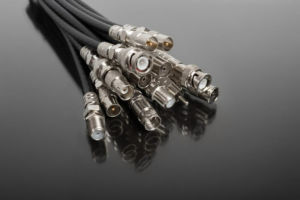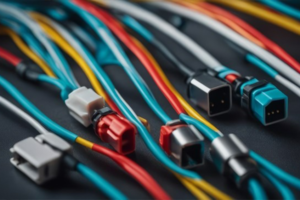The automotive wiring harness is the main network of the automotive circuit, mainly composed of wires, terminals, plastic parts and coverings.
1. Structure and characteristics of wires
The wire consists of a core conductor and an insulation layer.
Insulation layer material and its characteristics
Insulation materials have the characteristics of insulation, protection, heat resistance and oil resistance.
Insulation layer thickness:
①Thick-walled wire: usually used in areas of the chassis such as wheel speed sensors that require high wear resistance, and the bending radius should also be considered.
②Thin-walled wire: usually used for wires in all areas of the vehicle (excluding the chassis).
③Ultra-thin-walled wire: rarely used at present.
Material characteristics of conductors
①Pure copper (annealed): standard conductor material for automotive wires. Hard copper is not recommended and is generally only used on some coaxial cables.
②Copper alloy: generally used in 0.13mm2, in order to increase tensile strength and crimping performance.
③Tin-plated copper: usually used at the Pigtail end.
④Silver-plated copper: usually used in high temperature occasions (200℃+).
⑤Nickel-plated copper: usually used in high temperature areas (O2 sensors) 225℃+.
⑥ Aluminum: Usually used in battery cables to reduce weight and cost, but the conductivity of aluminum conductors is not as good as copper, and it is easy to corrode in the air.
Structural characteristics of conductors
① For conductors with a cross-sectional area of 0.13mm2 to 2.0mm2, Type A conductors are usually used to facilitate wire stripping and terminal crimping.
② For conductors with a cross-sectional area greater than 2.5mm2, both Type A and Type B are useful.
③ For places with high flexibility requirements, such as door hinges, steering columns, and electrically adjustable seats, Type C is usually used.
2. Determination of wire type
The selection of wire type focuses on the environment and function of the Wiring harness.
The selection of wire type should be based on platformization. The following are some general industry principles for wire type selection:
Since the current carrying capacity of the wire decreases with the increase of ambient temperature, the wire selection should be based on the working environment of the wire harness and the corresponding temperature resistance grade. The wire temperature resistance grade is divided into 8 temperature grades
The temperature around the engine is high, and there are many corrosive gases and liquids. Therefore, it is necessary to use high-temperature resistant, oil-resistant, vibration-resistant, and friction-resistant wires;
The wires on the automatic transmission must be resistant to high temperatures and hydraulic oils, and their temperature stability must be good;
The wires on the luggage compartment cover must maintain their elasticity at low temperatures, so cold elastic wires must be used to ensure their normal operation;
Weak signal sensors must use shielded wires, such as knock sensors, crankshaft position sensors, ABS wheel speed sensors, etc.;
The wires of frequently opened/closed doors require high bending resistance;
The wires crossing the car body require good flexural performance, etc.;
High-temperature resistant wires are more needed near the exhaust pipe (try to avoid them when wiring)
The wiring harnesses of ABS sensors, brake shoe alarms, etc. are often splashed with mud, water, sand and stones near the wheels, so they must use thicker, wear-resistant rubber materials and better flexibility.
The starter wire, generator output wire, battery harness, etc. must withstand large currents, so the insulation layer of the wire is required to have good heat dissipation.
Thick-walled wires are usually used in areas of the chassis that require high wear resistance, such as wheel speed sensors, and the bending radius must also be considered. Thin-walled wires are usually used for wires in all areas of the vehicle (excluding the chassis). Ultra-thin-walled wires are rarely used at present.





